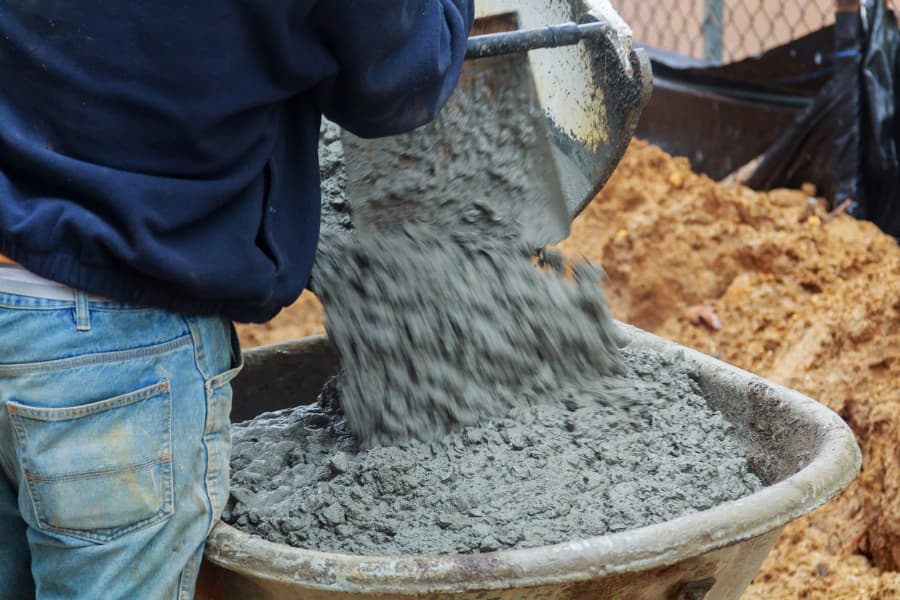
How to Pour A Concrete Slab Safely
Whether you plan to put up a shed or are planning a permanent patio installation, learning how to pour a concrete slab is a valuable skill. For a building project, concrete forms the foundation on which the building rests. Pouring concrete on your own can also reduce your costs when it comes time to fixing your driveway or making repairs to your sidewalk. Follow this 10-step process to get excellent results, even if you have no experience working with concrete.
1. Prepare the Location
Before you can start learning how to pour a concrete slab, you need to have the area stripped down to the bare earth and a sub-base laid to hold the concrete.
2. Compact the Subgrade
Your sub-base (subgrade) is made up of a gravel mix that you compact tightly to hold up your concrete. The more compact and stable the subgrade, the stronger your final concrete slab. Use a hand tamper or plate compactor, depending on the size of your project, to get a solid surface. Typically, you will need between four to eight inches of subgrade material, though you’ll need to check your local building codes for confirmation.
3. Create A Form
Next, build a form to hold the concrete in place. To check the edges and angles, measure from corner to corner, diagonally. If both measurements match, it’s properly constructed. Also, make sure to create a small slope with your form to help water run off the finished concrete.
4. Add Strength with Mesh or Rebar
Adding a layer of wire mesh or rebar can give your concrete added strength and help prevent cracking. For some uses, this step may not be necessary, but for high-traffic areas, such as driveways, adding this reinforcement is essential.
5. Mix Your Concrete
Follow the instructions for stirring up the concrete mix you’ve selected. Best Concrete Mix Corp. offers seven types of concrete, each with distinct properties. Each is already formulated with easy instructions for mixing to the proper consistency.
You can use a mixing truck or machine or stir by hand in a wheelbarrow with a shovel. Stir up the concrete until the result is smooth and blended. If it’s too solid, you can add a little extra water to loosen it up. The goal is to add as little water as possible while still creating a workable texture, so watch out for rainy New York weather and avoid the winter months.
6. How to Pour A Concrete Slab
Once you have your mixture ready to go, simply pour it into the form and fill up to the high point, using concrete shovels and rakes to maneuver the mix into the corners and throughout the form.
7. Screed the Top
Grab a board that is the width of your form and jiggle it back and forth over the surface of the concrete. Repeat this process across the entire surface until it starts to resemble a finished slab.
8. Float the Surface
Start with a bull float, pressing down on the surface of the concrete. This process helps the pure concrete rise to the surface and pushes down the gravel. As you push the bull float away, keep the back slightly upward. As you pull the bull float toward you, elevate the far edge. After you finish with the bull float, grab a hand float and go over the surface again in long, sweeping strokes.
9. Add Control Joints
Every five feet or so, you should cut in control joints to let water flow away from the concrete surface. Joints also help prevent cracking in concrete that might shrink or swell depending on the weather. Cut joints using a grooved and go about a quarter of the thickness of the slab.
10. Sweep to The Finish
Once the concrete has started to set, take a broom and sweep the surface to create traction. You can make designs or personalize your slab. If the broom starts to create more than surface designs or picks up clumps of concrete, re-float the area and wait.
The Finishing Touches
After completing your slab, seal the concrete to prevent discoloration. Most concrete takes several weeks to cure, so you may need to wet the surface periodically to minimize the chance of cracking.
For more information about choosing a type of concrete or advice about your pour project, contact Best Concrete Mix Corp. online or give us a call at 718-539-5946.


